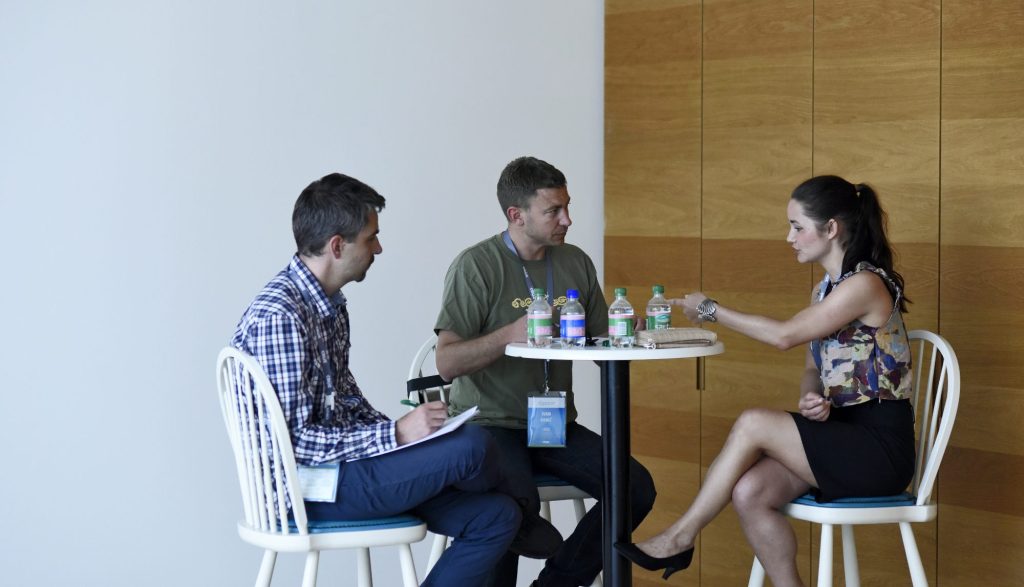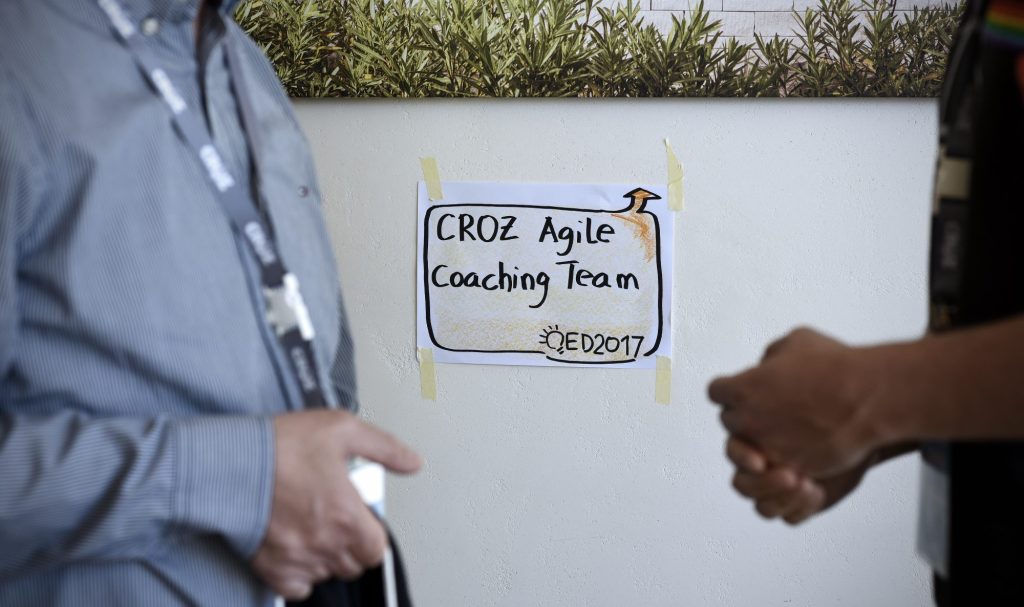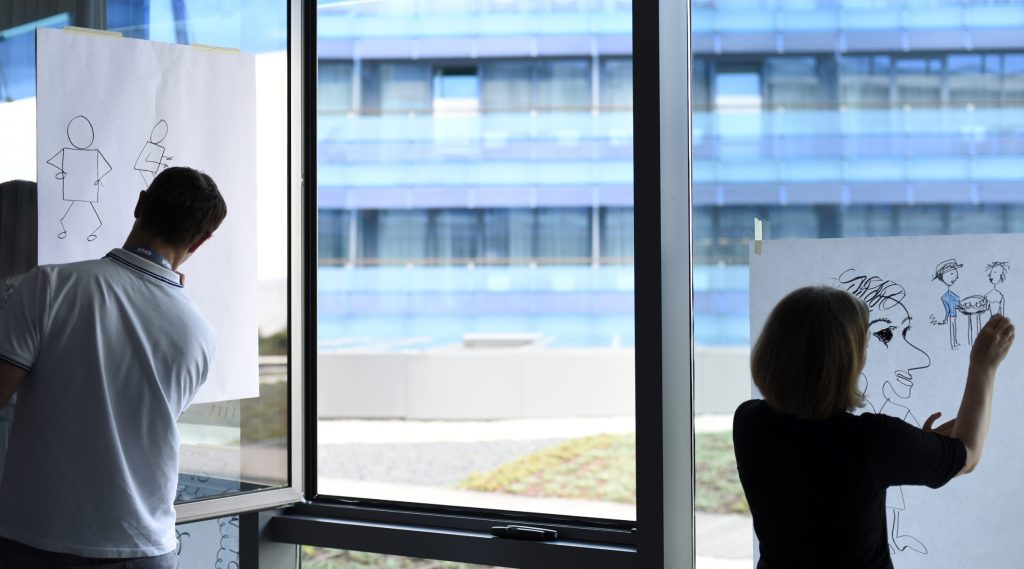The notion of “agility” has in some ways reached a dead end. The attitude that it is enough to just have teams, but better, agile, “customer facing” ones has been propagated by consultancy firms: Just apply Scrum, and if that doesn’t work, then try Kanban. Spotify model! Clients first!!
Of course, cross-functional teams will increase your organisational agility to a certain level (not too high, though), and by all means, do continue to help them become more independent and empowered. But is that enough? Is that even the biggest issue today’s organisations have to tackle?

“We are so freaking Agile”, Klaus Leopold
Fun fact: The Spotify model exists only when you look backwards, for that particular company, at that particular time, and for that market context. I would be very very surprised if they were working according to the “Spotify model” today. That wouldn’t make them a very agile company, would it?
What if you have a number of fantastic teams, which are solving the wrong problems? What if you don’t even understand the types of problems that will come tomorrow?
How do you prepare your organisation to reshape itself according to the markets you are in, or even better, you want to be in? How do you prepare it to adapt to earthquakes from the outside, as well as from the inside?
As it used to be
Traditional organisations are set up and structured on the waves of 20 to 25 year-long market cycles in relatively stable conditions. In such an environment, it is completely fine to have yearly budget planning cycle where you plan for 5% of your products’ 20 years long lifespans. Investments in multi-year research and development initiatives actually do make sense. That approach used to work just fine.
However, many of the experiences that made those traditional organisations successful are not relevant anymore. When market conditions change so fast that market cycles are shortened to 7 years or less, there’s no time to research for two or three years, there’s no sense in budgeting one whole year when the very product you’re developing might live only two.
Volatile external conditions inevitably affect internal beliefs and behaviours, and as a consequence have a profound effect on organisational culture and structure. But you don’t have to wait around for this to happen.
It is difficult to make predictions
It is difficult to make predictions, especially about the future.
— Danish proverb
Actually, making predictions is not even necessary. What we need is a state where organisations are able to invest in innovation at a steady and sustainable pace, maintaining their hard-earned victories and using their current potential, while at the same time responding to sudden and unexpected shocks from the market.
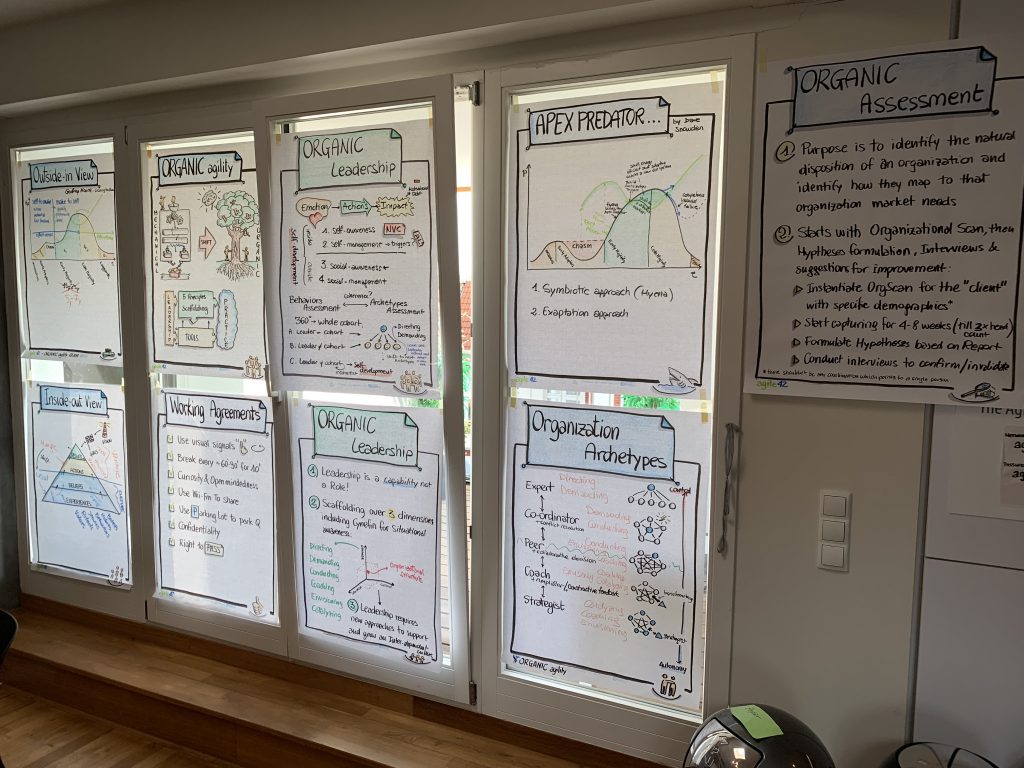
Some of the topics covered during ORGANIC agility training
The good news is that reshaping organisations to become more resilient and at the same time more innovative can be taught. It is actually possible to adjust organisations to be more responsive to market changes.
What has to change is that old 20th century approach, where you acquire a new structure from the outside. The problem is not necessarily the structure itself, but the process of acquiring it, even if that structure seems to be quite modern. Just learning to follow some mechanics, such as daily standups or retrospectives or company-wide planning meetings will put you behind those organisations that understand why they do that.
Instead, stimulate changes from the inside and integrate them quickly and in steps. Leverage existing experiences and find what is already good in your organisation. Nurture a culture of constant adjustment of the current organisational structure and its fit for market.
Holistic and evolutionary approach
ORGANIC agility is a holistic and evolutionary approach to enhancing organisational resilience which tackles those issues. It has grown out of the extensive experience of our partners, agile42, backed by theory, and focuses on finding what is already good in your organisation, by nurturing your organisational culture in order to increase resilience, interconnection, and the potential of fast reaction and recovery in the face of unknown challenges.
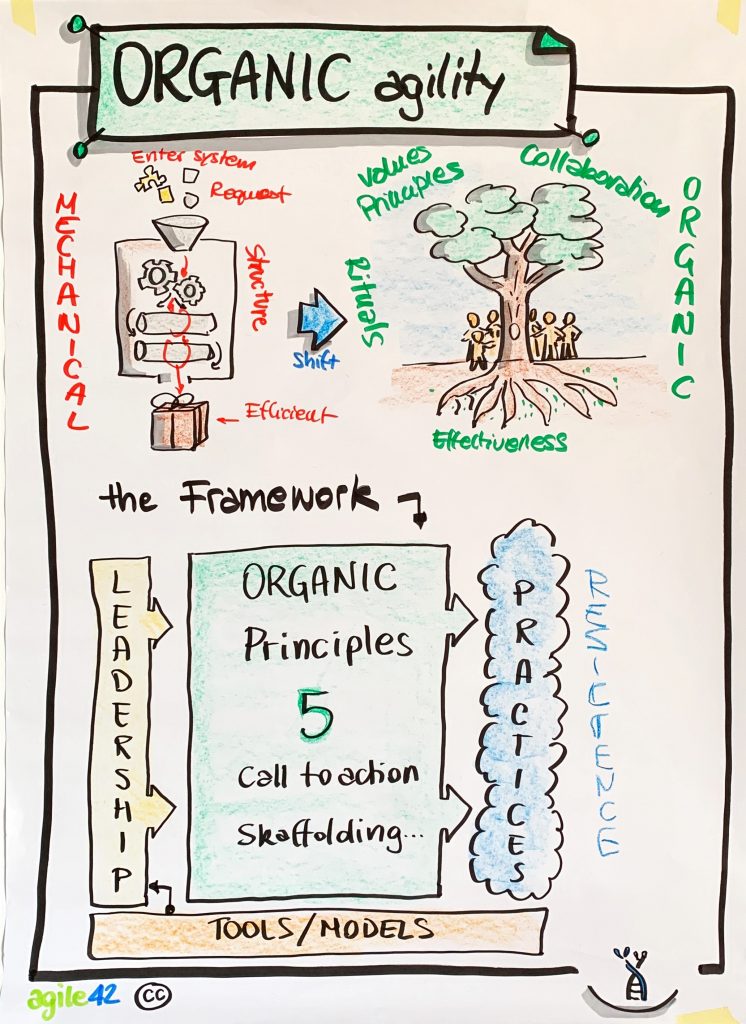
ORGANIC agility
ORGANIC agility is a framework that includes several elements.
The Leadership Model identifies different leadership behaviours and how they affect organisational structure and culture. There is no right or wrong leadership behaviour, but each behaviour is appropriate for and coherent with a specific situation, organisational orientation and culture. ORGANIC agility helps you to recognise and build those leadership capabilities and distribute them throughout your organisation so you can react fast and in new ways.

ORGANIC Leadership
Five guiding principles support growth towards greater resilience. The principles provide a scaffolding as opposed to a skeleton, because the idea is that once the principles have been implemented and internalised by an organisation, they will no longer be necessary in the same way, so they will change and evolve. In this way, the ORGANIC agility principles are useful in creating each organisation’s own principles, and then they can be replaced by others once the organisation has grown to a more mature state.
Apps and Tools allow you to quickly gain insights about what is the impact of what you are doing. In addition, you also need tools that will help you discover ways to implement the principles in practice.
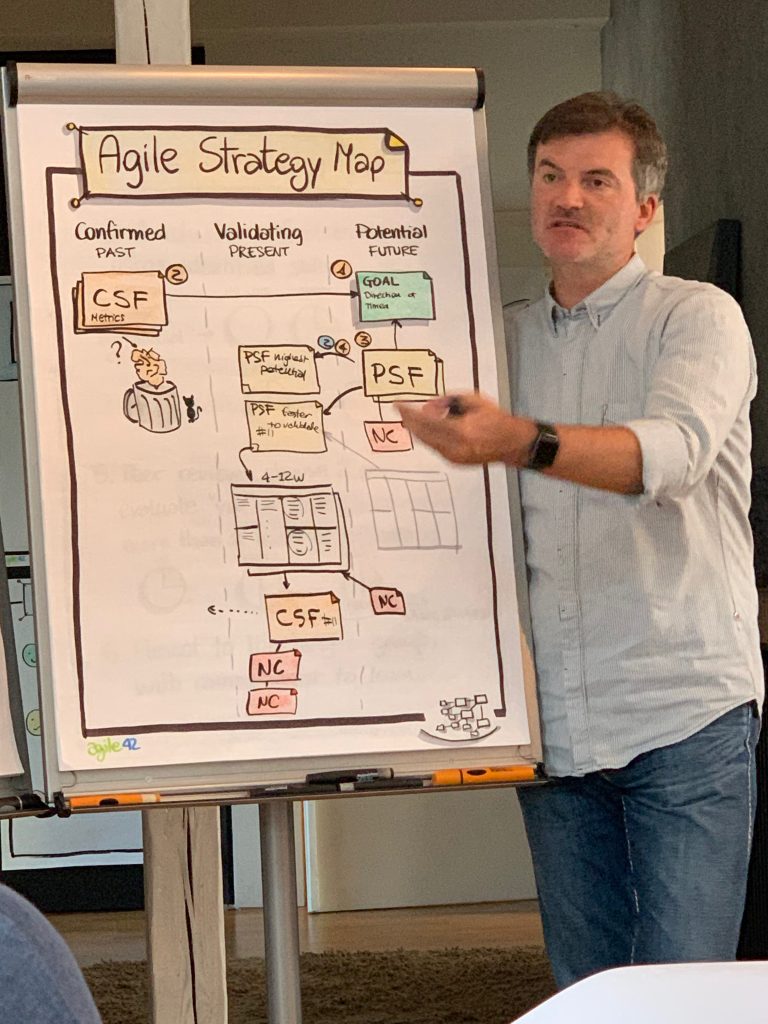
Agile Strategy Map is a tool used with ORGANIC agility. Explained by Andrea Tomasini
An organisation’s “own” Practices will emerge as a result of applying the above mentioned three groups (Principles, Leadership and Tool) coherently and context-appropriately. Most of ORGANIC agility is about exposing incoherence and the impact it has on both culture and operations on a daily basis. Once incoherence has been identified, then they can be addressed.
Why culture? And why resilience?
Fun fact: Once you have people looking towards the same direction, it is easier to change that direction when needed.
ORGANIC agility is not about one culture or leadership style that fits all organisations and market demands. It is about being able to recognise the appropriate setup for the context and environment your organisation is coping with and being able to act appropriately.
ORGANIC agility is in a way “a mindset enhancement program”. It will help your organisation move from the old, mechanistic view of operating towards a more appropriate, adaptable way of working.
And that requires work.

ORGANIC agility is a framework that includes several elements
With ORGANIC agility you definitely won’t get a blueprint of your organisation’s future culture. You won’t be able to “outsource” the change. However, you’ll be able to recognise your current state, your needs and your ways towards resilience.
And when resilient, each disturbance will make your organisation a little bit better, just as living organisms strenghten their immunity after illness.
Join us for ORGANIC agility events and meetups, follow this space for more information, or get in touch with us for more details.
— All flipcharts drawn by Andrea Tomasini.
Falls Sie Fragen haben, sind wir nur einen Klick entfernt.

